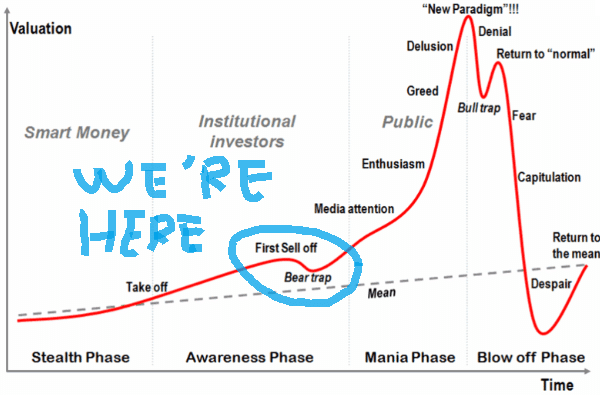Grow Your Business with Google Ads: A Comprehensive Guide
Every business needs more than just a great product or service—it needs to reach the right audience at the right time. Grow your business with Google Ads by positioning yourself in front of customers actively searching for what you offer. This guide will show how leveraging Google Ads can drive business growth by targeting your […]

Every business needs more than just a great product or service—it needs to reach the right audience at the right time. Grow your business with Google Ads by positioning yourself in front of customers actively searching for what you offer.
This guide will show how leveraging Google Ads can drive business growth by targeting your audience and optimising ad strategies. Whether you’re a startup or an established enterprise, understanding and mastering Google Ads can be the key to large growth. Let’s explore why Google Ads is essential, what it involves, and how you can make the most of it.
Overview of Google Ads

Google Ads is the world’s most popular online advertising platform. Millions of businesses use it to increase their visibility and sales. This advertising solution lets businesses bid on specific keywords, and when users search for those terms, ads appear at the top of Google’s search results. However, Google Ads isn’t limited to search results; it offers various ad formats to expand your reach across the web.
Why Google Ads is Essential for Business Growth
Businesses that fail to use Google Ads risk losing out on significant market opportunities. Here’s why Google Ads is a must-have tool for any business aiming for growth:
- Increased Visibility: It allows businesses to appear at the top of Google search results, which increases their visibility and credibility.
- Targeted Marketing: The platform’s targeting options enable businesses to reach the right audience based on their location, age, interests, and more.
- Measurable ROI: Unlike traditional advertising, Google Ads provides real-time data on clicks, conversions, and ROI. This enables businesses to optimise their campaigns effectively.
What is Google Ads?
Google Ads is an advertising platform that allows businesses to create ads to appear on Google’s search engine and its affiliate sites. The platform operates on a pay-per-click (PPC) model. This means businesses only pay when someone clicks on their ad. This makes Google Ads an attractive and cost-effective solution for businesses of all sizes.
Types of Google Ads
Google Ads offers several ad formats to help you reach your target audience in multiple ways:
- Search Ads: These ads appear at the top of Google search results based on keyword searches. They are text-based and highly effective in reaching customers with high purchase intent.
- Display Ads: Display ads are banner or visual ads that appear on websites within Google’s Display Network. They are ideal for building brand awareness.
- Video Ads: These ads appear on YouTube before, during, or after video content. Video ads help capture user attention quickly and are perfect for storytelling.
- Shopping Ads: Shopping Ads allow e-commerce businesses to display products with images, prices, and descriptions directly in search results.
- App Promotion Ads: These ads promote mobile apps, leading users to download them directly from the app store.
How Google Ads Work

Google Ads functions on a bidding system where advertisers bid on specific keywords relevant to their business. When users search for those keywords, Google runs an auction to determine which ads appear and in what order. Ad placement and cost-per-click depend on various factors, including your bid amount, ad quality, and relevance to the user’s search query.
Benefits of Using Google Ads for Business Growth
1. Instant Visibility on Search Results
Google Ads allows businesses to appear immediately at the top of search results, bypassing the lengthy process of organic rankings. This immediate exposure can increase website traffic and brand awareness.
2. High Targeting Precision
The platform’s extensive targeting options let businesses focus their advertising efforts on the most relevant audiences. You can refine your targeting based on user demographics, location, device type, interests, and more, ensuring your ads are shown to potential customers most likely to convert.
3. Measurable Results
Unlike traditional advertising channels, Google Ads offers comprehensive and transparent analytics. Businesses can track every click, conversion, and interaction, providing essential insights into campaign effectiveness. This level of transparency allows for informed decision-making and campaign optimisation.
4. Cost-effectiveness with Proper Management
Google Ads uses a pay-per-click model, meaning businesses only pay when someone clicks on their ad. This feature makes it a cost-effective option, especially when combined with strategic management and continuous optimisation.
5. Flexibility to Suit Any Budget
One of Google Ads’ most appealing aspects is its flexibility. Businesses can set a daily or monthly budget. This allows them to control costs and avoid overspending. This flexibility means businesses of all sizes can enjoy Google Ads, regardless of their marketing budget.
Setting Up a Google Ads Campaign
1. Creating an Effective Google Ads Account
The first step in creating a successful Google Ads campaign is setting up an account. Link your Google Ads account to Google Analytics to track conversions and user behaviour. Set up conversion tracking, define your key performance indicators (KPIs), and create custom reports to measure success.
2. Keyword Research and Selection
Keyword research is a crucial component of a successful Google Ads campaign. Utilise tools like Google Keyword Planner to identify relevant keywords that align with your audience’s search intent. Focus on high-search-volume keywords that have lower competition, and consider long-tail keywords to capture more specific queries.
3. Setting Goals for the Campaign
Before launching your ads, define your campaign goals. Are you aiming to build brand awareness, generate leads, or increase sales? Your goals will shape your targeting, ad messaging, and bidding strategy.
4. Structuring the Campaign
Organise your campaigns and ad groups logically to streamline management and reporting. Segment your ads by different audience groups, products, or services to better target your campaigns. Divide budgets and use targeting options wisely to maximise reach and engagement.
Crafting Compelling Ads
1. Writing Effective Ad Copy
The success of your Google Ads campaign largely depends on the quality of your ad copy. Start with an attention-grabbing headline that addresses your target audience’s needs or pain points. Follow up with a concise and engaging description highlighting the unique benefits of your product or service. Include a clear call-to-action (CTA) to prompt users to take the next step.
2. Using Ad Extensions
Ad extensions can improve the performance and visibility of your ads. Use site link extensions to direct users to specific landing pages, call extensions to enable direct phone inquiries, and location extensions to attract local customers. These enhancements can increase click-through rates and ad effectiveness.
Importance of Landing Pages and Relevance
It’s vital to ensure that your landing page matches the message of your ad. A disconnect between the ad copy and the landing page can lead to a poor user experience and lower conversion rates. Your landing page should reinforce the message of your ad, be visually appealing, and have a clear CTA.
Bidding Strategies for Maximising ROI

1. Manual vs. Automated Bidding Strategies
Google Ads offers both manual and automated bidding strategies. Manual bidding provides more control over your ad spend. It allows you to set individual bids for specific keywords. Automated strategies, such as Target CPA (cost-per-acquisition) or Target ROAS (return-on-ad-spend), let Google’s algorithms optimise your bids based on your desired outcome.
2. Setting the Right Bid for Different Ad Placements
Not all ad placements are created equal. Search ads need higher bids to secure top positions, while display ads can be lower due to their broader reach. Adjust your bids accordingly to achieve optimal ad placement and ROI.
3. Adjusting Bids Based on Performance and Competition
Review and adjust your bids regularly based on ad performance and competitor activity. The flexibility to change bids ensures you stay competitive and maximise your ROI.
Optimising Google Ads for Better Performance
Importance of A/B Testing
A/B testing is essential for finding what resonates best with your audience. Test different ad headlines, descriptions, images, and landing pages to identify the most effective combinations. Continuous testing and refinement lead to improved ad performance and higher conversion rates.
Monitoring Ad Performance
Monitor key metrics such as click-through rate (CTR), conversion rates, and Quality Score. This will help you identify which ads are performing well and which need adjustments.
Continuous Adjustments Based on Data
Ad optimisation is an ongoing process. Pause underperforming ads, update keywords, refine targeting, and change bids based on the insights you gain from your data. This continuous refinement ensures your campaigns remain relevant and effective.
Targeting the Right Audience

1. Using Audience Targeting
Google Ads offers powerful audience targeting options to help you reach specific groups of users. Use custom audiences to target users based on their behaviour, such as users actively searching for similar products or services. In-market audiences allow you to reach potential customers with a higher likelihood of converting.
2. Geo-Targeting and Location-Based Ads
If your business operates in specific locations, geo-targeting can be invaluable. You can refine your ads to target users within a specific city, region, or even a particular radius. This precision ensures your ads reach the most relevant audience.
3. Demographic and Device Targeting
Understanding your audience’s demographics and device usage can lead to more precise targeting. For instance, if your product appeals primarily to young professionals, prioritise mobile ads to align with their browsing habits.
Measuring Success and Analytics

1. Key Performance Metrics to Track
Google Ads provides several key metrics to track, including click-through rate (CTR), conversion rate, cost per conversion, and Quality Score. Monitoring these metrics will help you gauge the effectiveness of your campaigns and guide necessary adjustments.
2. Using Google Analytics to Track User Behavior Post-Click
Integrating Google Ads with Google Analytics enables you to track user behaviour beyond the initial click. This integration allows you to gain insights into how users interact with your website, which pages they visit, and where they drop off. Use this information to refine your ads and landing pages.
3. Reporting Tools Within Google Ads
Google Ads’ reporting tools allow you to generate custom reports based on your campaign goals. Visualise performance trends, share insights with your team and make data-driven decisions for your campaigns.
Common Mistakes to Avoid in Google Ads
- Ignoring Quality Score: Focusing on bidding without considering ad quality and relevance can lead to higher costs and lower ad placements.
- Not Using Negative Keywords: Negative keywords help filter out irrelevant traffic, reducing wasted ad spend. Regularly update your negative keyword list to maintain ad relevance.
- Lack of Regular Campaign Monitoring: Google Ads requires regular monitoring and adjustments. Please do so to avoid ad fatigue, poor performance, and missed opportunities.
- Overlooking Mobile Ad Performance: With mobile usage continually rising, ignoring this segment can result in missed opportunities. Optimise your ads for mobile devices to capture a broader audience.
Scaling Your Google Ads Campaign
1. Identifying Successful Campaigns and Scaling
Focus on campaigns that deliver high ROI and divide extra budget to scale them. Expanding successful campaigns allows you to capitalise on proven strategies and increase your market reach.
2. Expanding Keyword Lists and Ad Groups
Once you’ve identified successful keywords, expand your list to capture extra opportunities. Similarly, increase the number of ad groups to target new audience segments and diversify your targeting.
3. Increasing Budget Based on ROI
If a campaign consistently delivers profitable returns, consider increasing the budget to capitalise on growth opportunities. Monitoring and scaling successful campaigns is key to sustained growth.
Conclusion
Grow your business with Google Ads, a versatile and powerful tool that can boost your business growth. By setting up campaigns, refining your targeting, and optimising based on data insights, you can achieve immediate visibility, attract relevant audiences, and drive conversions. Success with Google Ads requires continuous monitoring, experimentation, and adaptation, but the rewards are well worth the effort. Start small, learn from your data, and gradually scale your campaigns as you gain confidence and experience.
Ready to grow your business with Google Ads? Get started today and take control of your digital growth journey!
What's Your Reaction?









![How Marketers Can Use Retail Media Networks to Get In Front of Customers [Expert Tips]](https://www.hubspot.com/hubfs/retail%20media%20networks-hero%20%28598%20x%20398%20px%29.webp)
































.png)








































